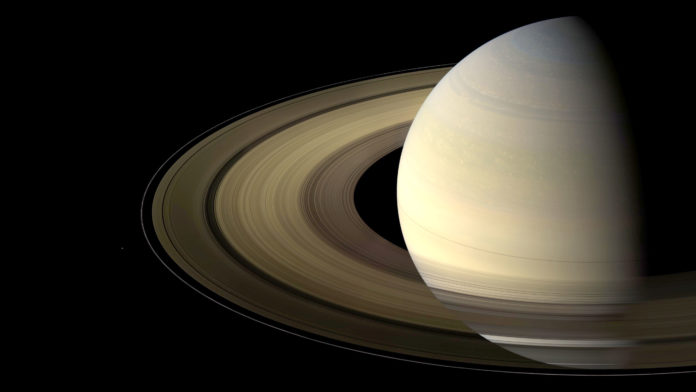NASA ‘s Cassini is tracking several small, persistent objects as it travels and continues its weekly ring-grazing orbit. It discovered these objects while diving just past the outside of Saturn’s F-ring.
The images captured by Cassini’s narrow-angle camera show two such objects. Cassini captured these objects on Feb. 5, 2017. A team of scientists at Space Science Institute in Boulder, Colorado, study these images. They gave these objects informal designations, F16QA and F16QB. The spacecraft captured F16QA at a distance of 556,000 miles from the F-ring. It captured F16QB at a distance of 610,000 miles from the F-ring.

Source: NASA

Source: NASA
Cassini detected these in spring 2016, as it transitioned from more equatorial orbits to orbits at high inclination about Saturn’s equator. Researchers have observed that objects such as these occasionally crash through the F-ring’s bright core. This produces spectacular collisional structures.
According to a group of scientists, these objects may be mostly loose agglomerations of tiny ring particles. Some of these scientists suspect that small, fairly solid bodies lurk within each object, given that they have survived several collisions with the ring since their discovery.

Source: Wikipedia
Imaging team members said that the faint retinue of dust around these objects is likely the result of the most recent collision. The researchers think these objects originally form as loose clumps in the planet’s F-ring core as a result of perturbations triggered by Saturn’s moon Prometheus. In case they survive subsequent encounters with Prometheus, their orbits can evolve. Eventually, this will lead to core-crossing clumps that produce spectacular features, even though they collide with the ring at low speeds.
Cassini-Huygens is a cooperative project of NASA, ESA and the Italian Space Agency. This mission to Saturn is aimed at discovering several aspects of the planet and its moons.

























